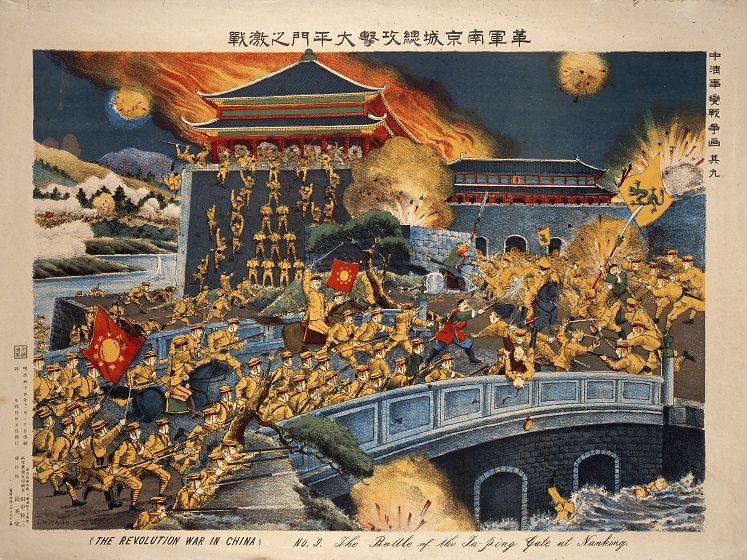 An episode in the revolutionary war in China, 1911 - the battle at the Ta-ping gate at Nanking Wellcome Library, London, CC BY 2.0
An episode in the revolutionary war in China, 1911 - the battle at the Ta-ping gate at Nanking Wellcome Library, London, CC BY 2.0
Why do some societies experience regular revolutions which transform their political and economic systems, while others remain relatively stable? Dr Michael Muthukrishna’s research shows how the cultural differences in each society may help explain their history.
China’s history is marked by long periods of stability, interrupted by dramatic rebellions against the ruling class. From the overthrow of the Ming Dynasty to the 20th century Communist revolution, these violent upheavals are a regular occurrence for the East Asian nation. By contrast, the United States has enjoyed relative political and economic stability since it won independence from Britain, with the American civil war, which ended in defeat for the southern rebels, the only serious threat to overthrowing the democratically elected government by force.
Dr Muthukrishna of the Department of Psychological and Behavioural Science and his co-author Dr Mark Schaller developed computational social network models to try to explain why the history of countries like China has been so volatile while others such as the United States have been so steady.
Their starting point was separating different societies by how they are structured socially. Broadly, societies tend to vary in the density of their social networks, and the degree to which individuals are influenced by those around them.
The extent of social network structure and susceptibility to social influence are key factors in how an idea will be received and then spread through a society. Dr Muthukrishna says: “Ideas can flow more quickly in societies with dense social networks, but these societies also tend to be more susceptible to social influence. These societies are more resistant to new ideas, but under the right conditions, these societies are also more susceptible to rapid and wide-scale adoption and acceptance of new ideas.”
China is conformist collectivist, with a society that has historically been both conservative with dense social networks, while the United States is a country founded on the idea of individual liberty, with social groups and networks tending to be looser and more dispersed.
The researchers devised a computer model which aimed to replicate these different types of societies. The societies were built with varying degrees of certain characteristics, such as an individual’s tendency to connect with others, and how liable they were to be influenced by their peers.
The initial results that came out of the model showed its credibility; if societies are more collectivist and conformist, they tend to consolidate majority opinion more quickly, explained by the tight connections and influence over peers.
The researchers then tested what would happen if a well-connected messiah-like figure started to promote the kind of radical ideas that could lead to a revolution. Would they be more likely to see it succeed in a conformist, collectivist society like China, or in the looser and more individualistic United States?
The results showed that the ‘messiah’ would have a difficult time making a breakthrough in a country like China. But if they did succeed, their ideas would spread quickly, with cataclysmic and transformative results, potentially building to a revolution.
In an individualistic country like the US, the messiah figure would find making an initial breakthrough less difficult, but the upheaval would be confined to small groups within a society, rather than spreading rapidly across the entire nation.
Dr Muthukrishna says: “In the US, there are many examples of cults that attract a small number of loyal followers. They achieve a small-scale breakthrough but don’t engineer the kind of transformative social change we have seen so many times in places like China.”
“The irony of these results is that in a collectivist and conformist society, these vast, highly disruptive revolutions are more likely. Their culture leads to the paradox of long periods of stability followed by rapid change.”
The model offers a theoretical explanation for the conditions that helped achieve America’s 20th century hegemony, as well as China’s long and tumultuous history. It also gives us an indication of what the future holds for these two nations, with one more likely to experience another revolution, though perhaps not for a long time.